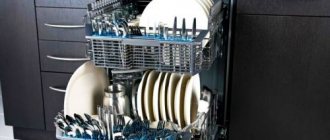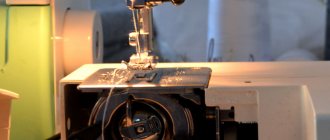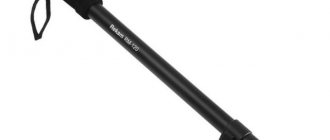The article provides an overview of how to choose a dishwasher - expert advice will help with this. You will find out why the device is needed (and is it really necessary?), what types of machines there are, and what the user of the model will encounter in certain cases of use. The article is conventionally divided into three sections.
- A practical guide to choosing a machine - what criteria should you focus on in order to buy a good machine.
- Introduction to the device, characteristics.
- How to properly care for household appliances so that they last longer.
In the interior of the kitchen
How to choose a dishwasher - expert advice and characteristics
We suggest reading expert advice on how to choose a dishwasher. We recommend looking at the following key points :
- availability of basic and additional functionality;
- capacity;
- leak protection function;
- washing modes (general, delicate);
- water purity sensor;
- price and brand.
On the kitchen counter
Capacity
The amount of dishes washed depends on this parameter, so you need to treat it with attention. There are so-called compact models designed for 4 or 5 sets of dishes.
A set for one person includes: shallow and deep plates, a cup and saucer and cutlery.
The price of such devices is slightly lower than that of standard ones, but they do not help save electricity and water at all. Housewives often complain that the quality of washing in such machines is not very high. Many models do not accommodate large dishes; they have to be washed by hand. For a family of four, a machine that can hold 8 place settings is the best option.
For 10 sets
Functionality
Dishwashers have a large number of additional functions that make cleaning easier. You can control the wash cycle capabilities using the control display and various cycle progress indicators. It is possible to set alarm indicators and a timer with a sound signal.
Electronic control
Leak protection
Each model is equipped with a system that protects against leakage. This function is aimed at detecting internal leaks of the washing chamber (or its overflow with water). This stops the washing cycle, after which the water is automatically drained using the plumbing system.
Some machines are equipped with a type of control system that prevents external water leakage. If a leak is detected, the water supply stops and the wash cycle is paused.
Leak protection
Delicate wash mode
Delicate wash is a mode used for washing fragile dishes . Such things are made of thin glass, they do not tolerate high temperatures, and the mode allows you to set the water to 40 ° C. The only negative is that sometimes the machine is not able to cope with serious dirt.
There are machines that implement the function of simultaneously washing both delicate and heavily soiled dishes.
Setting to delicate mode
Water purity sensor
An aqua sensor (also known as a water purity sensor) is a photodiode and a phototransistor located opposite each other on the same board. The board itself is protected by a special housing, and when the board receives a signal about the purity of water (an infrared ray passing from a photodiode through the water), the washing program changes: clean water is reused, and new water is no longer poured. This saves water resources and there is no need for additional rinsing of dishes.
With water purity sensor
Price
The price of the device depends on the number of included features. Simple models are inexpensive. In addition to the lack of some important functions such as the delicate washing mode, we note careless rinsing, due to which the dishes will remain dirty after a cycle.
The size of the machine affects its price; small models are cheaper, but the load capacity of the dishes will not allow you to wash large pots.
In a modern kitchen
How to choose a dishwasher
Before deciding on a dishwasher model, it is worth learning more about the technical characteristics that you need to pay attention to when purchasing.
All models differ from each other in the following parameters:
- dimensions;
- type of instalation;
- specifications;
- number of programs;
- basic and additional functions.
Let us consider in detail each of the above parameters.
Built-in dishwashers are considered the most practical and are more often than other types installed in apartments
Dimensions and dimensions
Calculation of the dimensions of the PMM is based on three parameters: width, height and depth. According to these criteria, there are 3 categories of devices:
- full size;
- narrow;
- compact.
For full-size models, the height can be from 80 to 95 cm, the width - up to 60 cm, and the depth - up to 65 cm. For narrow PMMs, the width is 15-20 cm less. Compact ones can come in different sizes, depending on the type of installation (built-in or free-standing). The choice of device dimensions depends on the size of the kitchen.
Experts recommend making preliminary measurements of the area of the room and, based on how much free space there is, choosing the size of the dishwasher
type of instalation
Another important parameter that you need to pay attention to first is the type of installation. Based on this feature, dishwashers are divided into three categories:
- autonomous;
- built-in;
- partially built-in.
Standalone or desktop are models that are installed as independent equipment. Built-in dishwashers are completely hidden behind the facade of kitchen furniture, which looks as organic as possible. Partially built-in PMMs are a combined option, when the body is built-in, while the outer panel of the equipment is located outside.
Partially built-in PMM model
Specifications
The most difficult thing is to understand the technical characteristics of dishwashers. Before buying a device, it is important to pay attention to the following parameters:
- capacity;
- energy efficiency;
- number of modes;
- additional functions.
Let's take a closer look at the main technical characteristics of dishwashers.
Capacity
Capacity is measured by the load volume, that is, the number of dishes that can be washed at the same time. Compact PMMs, as a rule, are designed for 2-4 sets of dishes, and large ones for 10-12. It should be understood that a set means several plates, a cup (or glass), a spoon and a fork, necessary for one person to eat.
The capacity of dishwashers is also determined by the number of pull-out baskets that are included in the kit. They are made of stainless steel, so they are not susceptible to rust. There are many modifications of baskets. They can be adjusted and folded, depending on the load volume. A set can contain from 2 to 7 for different types of dishes.
Dishwasher for 10 place settings
Energy consumption
The energy efficiency of the device is indicated in the technical documentation and corresponds to the energy consumption class. Class A devices consume the least amount of energy, while Class G devices consume the maximum amount. Energy consumption is expressed by kW/h and determines the energy consumption for one operating cycle. The latest models of equipment are assigned classes A+, A++, A+++, which indicates even greater savings in resources.
It is not recommended to buy PMMs of classes F or G, as they have low energy efficiency. It is better to choose an A+++ class dishwasher, whose energy efficiency is 25% higher than that of a class A appliance.
Type of control and number of modes
There are two categories of dishwashers based on the type of control: mechanical (push-button) and electronic (with touch panel). The difference between them is the number of functions, design and cost. All dishwashers have two standard programs: washing and drying. Most models have 4-5 modes, which differ in operating water temperature.
Additional features:
- connection to hot water;
- protection against leaks;
- delicate/intensive wash;
- delayed start;
- child lock;
- automatic mode detection;
- partial load;
- self-cleaning;
- determination of water hardness;
- pre-rinse.
The latest models may have a larger list of additional modes, depending on the class of the device and its cost.
Touch control model
Built-in or floor-standing?
When choosing a technique, it is important to look at its design. The dishwasher can be either built-in or floor-mounted. Which option has the best performance?
How to choose a built-in dishwasher?
How to choose a built-in dishwasher? Categorizing models will help answer this question.
- Built-in machines with a closed panel or fully built-in. Their façade is usually decorated with panels; their appearance is unremarkable. An excellent option for an apartment where the kitchen is combined with the living room - a small emphasis on household appliances is very advantageous.
Fully built-in
- Built-in machines with an open panel or partially built-in, because their facade is clearly visible and equipped with an informative display. It's easy to browse through the modes, set up your own with the press of two or three buttons. Will appeal to lovers of digital technology. The price of the models is strikingly higher than that of their “closed” competitors.
Built-in with open panel
Countertop dishwasher – which one to choose?
Having considered built-in models, let us turn to the concept of a tabletop dishwasher. Which one to buy and how not to make a mistake?
Tabletop cutlery is very convenient for small families where the accumulation of dishes is not too large. The washing cycle of the machine takes about half an hour, the water consumption is relatively small - 9-12 liters. Their range of functions is not very large, and the quality of washing leaves much to be desired.
Tabletop model
The height of floor-standing models for 8-14 sets is 80-87 cm. The height of compact tabletop dishwashers with a capacity of 4-5 sets is 40-50 cm.
Type of control and programs
The dishwasher control can be mechanical or electronic.
All built-in models are equipped with an electronic control panel, and programs are selected by pressing a button or touching the touch display. Even in the simplest models you can use various temperature and additional programs.
Main temperature conditions:
- Eco - 50 degrees;
- Automatic - 45-60 degrees;
- Intensive - 70-80 degrees;
Additional programs:
- Delicate for glass and fragile dishes - 40 degrees;
- Half load if there are not enough dishes, but they need to be washed;
- Accelerated - if the dishes need to be washed urgently and quickly;
- Soaking\Rinsing;
- Manual time setting;
Another useful option is the light indication, which indicates that the cycle has not yet been completed.
It is called “beam on the floor”. “Display projection onto the floor” is an improved version, which is found in expensive models. Dishwasher Bosch SMV87TX01R
loading for 14 place settings, electronic control, 7 programs, 59.8×55×82 cm, silver color
3 01460*
3 46691
3 46691
How to choose a dishwasher for your home based on size
Some tips on how to choose a dishwasher for your home based on its size.
- Models of the same size have completely different capacities.
- It is possible to change the dimensions of an already purchased device using screw supports, thanks to which the machine exactly matches the headset.
Next to the sink
- If you are choosing a device for a small family of 2-3 people, focus on the dimensions 60x50x50 cm (width-height-depth).
- A device with dimensions of 60x80x50 cm is suitable for a family of 4 or more people. In this case, the depth and width are the same as in the first option, but the machine will be larger in height.
- If you require a larger model, we recommend choosing a product with a capacity of 11 sets or more. The dimensions of the machine are the same as in the second option.
Exiteq EXDW-T501
Most models are designed to allow the cover to be removed, reducing height. A similar device is placed under the tabletop of a standard set. Don’t discount the length of the connection hose and the height adjustment of the basket, thanks to which large dishes can be placed without obstacles.
Problems with using a non-built-in dishwasher
First of all, you should pay attention to the problems associated with the operation of a free-standing built-in dishwasher. The thing is that there will be no difficulties with connecting and starting, since such a unit is designed exactly the same as a device that is produced separately. But experts do not recommend using a dishwasher regularly in this way. And that's why.
- Firstly, it's simply not aesthetically pleasing. It would seem like a small thing. But all the unsightly insides that should be hidden behind the facade (for example, soundproofing material) will be on the outside, which will immediately give your kitchen an unflattering appearance.
- It will be almost impossible to open the door of such a dishwasher without a front, especially if it is equipped with a tight spring. After all, a built-in dishwasher is designed to have a front and a door with a handle, and without them you will have to spend a lot of time getting used to it.
- Extra noise. Any dishwasher makes quite loud noises, but built-in dishwashers are much less equipped with sound insulation in the expectation that some of the sound will be absorbed by the set. Therefore, if you operate the machine separately, be prepared for noise during operation.
- The centrifugal force of a dishwasher is not as powerful as that of a washing machine, but it will still shake your unit quite well. This is not such a serious problem, but you need to be prepared for it.
It is best, of course, to be patient and wait for the kitchen furniture that will have a built-in dishwasher. Then there will be no worries or hassle, everything will work as usual. But if you really want to test the unit, take into account the above difficulties in order to properly use the device without embedding it.
Advantages and disadvantages
When studying the question of how to choose a dishwasher for your home, figure out why such a device is needed in an apartment. Main advantages :
- Less water consumption . Compared to washing by hand, the machine uses less water, unless you use it for every occasion;
- Thorough wash. You will achieve this effect with your hands, spending much more effort and time;
- Additional disinfection . The machine heats the water to 90-100 degrees, such temperature treatment kills all bacteria that get on the dishes;
- Automatic water heating . This is especially true during periods when hot water is turned off;
- Autonomy of the machine . The delayed start option is convenient if you need to go away or wash the dishes in the morning, leaving them at night;
- Long shelf life of dishes . Since washing takes place without mechanical interventions such as hard sponges, the top layer of plates and cups remains shiny longer and without minor damage;
- Quiet operation . Modern models operate almost silently, which is important for families with small children.
NEFF companies
The main disadvantage of using the machine is considered to be considerable energy consumption. The cost of detergents increases significantly, in contrast to manual washing. We recommend purchasing not only special tablets, but also a special rinse aid and water softener.
Don’t forget to rinse the dishes before putting them into the machine - the machine does not get rid of large pieces of food inside plates and pots, and if you don’t remove them manually, they will remain at the bottom of the container. Dishwasher users turn a blind eye to such disadvantages, because the results in any case significantly exceed certain inconveniences.
In red
Which dishwasher to choose?
Opponents of dishwashers argue that the benefits of using kitchen appliances of this kind only appear in industrial settings or in very large families.
Note!
Beautiful short curtains for the kitchen | Modern options for design ideas for using beautiful short curtainsKitchen layout - 175 photos and a detailed master class on creating kitchen designs of different sizes
Kitchen hood without vent: instructions on how to select and install a hood without vent! Review of new products 2020
In a small family, you will have to accumulate dirty dishes for a whole day or even several days, so as not to “drive” the unit half empty, wasting electricity and water.
However, today you can find good models of half-load dishwashers on sale that use only the required amount of water. By choosing a compact dishwasher model, you will completely solve the problem of washing dishes left over by 2-3 people and the issue of finding a suitable place in a small kitchen to install this device.
TOP 5 device functions
Now you know how to choose a dishwasher, you can take the expert’s advice into account and it’s time to learn more about the non-standard functions that the dishwasher accumulates.
- Child lock function . It will come in handy if there are children in the family.
- VarioSpeed . Washes and dries dishes at full load twice as fast, without wasting energy.
- Hygiene. Provides longer rinsing at elevated temperatures, which helps to rinse off detergent residue several times more thoroughly.
- "Smart" processor AquaSensor. The processor has sensitive sensors that regulate the most accurate water supply. This saves energy.
- InfoLight. A luminous point on the floor that indicates the operation of household appliances.
Large and roomy machine
Principle of operation
The user is required to put dirty dishes into the device chamber, add a little detergent, decide on the washing mode and start the machine. Water enters the machine body (it is drawn in the required quantity from the water supply).
Miele G6995 SCVi XXL K2O
The water is heated to the required temperature by heaters. The next step is adding dishwasher detergent. They are added in certain portions and based on the selected mode. The washing solution is supplied to spray units, which “fire” the dishes and clean them. The last stage of direct washing is to drain the dirty water into the drain.
This is followed by a rinsing process, the dishes are sprayed with cold water. Next - drying , it happens:
- Condensation _ The moisture evaporates and condenses on the walls, after which it flows into the drain;
- Turbo drying . Hot air blowing is activated.
After washing dishes
Each dishwasher is equipped with an operation control sensor - it determines the water temperature, its level in the machine, and overheating of the housing.
Quality of washing and drying
The quality of washing dirty dishes depends on several factors.
- High efficiency class. For purchase, we recommend that you consider models that have a washing and drying efficiency class of at least A. A high class is a guarantee that the design of the equipment and the technologies implemented are aimed at washing and drying all the dirty dishes that you place in it.
- Detergents. It is important to choose high-quality products for the dishwasher: special salt to normalize water hardness, active detergent in tablets and rinse aid. Powders are no longer relevant; they have been replaced by combined detergents, which also include salt and rinse aid. But their application has its own nuances. If the water hardness in the tap water is more than 3.7 mmol/l, then salt is required.
- Follow the instructions, or rather, correctly load the dishes. If you ignore the recommendations, neither a high-class nor an expensive detergent will help.
Operation and care
All car care comes down to the following points :
- correct setting of modes and following instructions when working with it;
- using dishwashing detergents designed specifically for your model.
Two-tier machine
How to use the machine correctly
These rules will be very helpful in operating the machine.
- Before loading dishes into the dishwasher, be sure to remove large food residues from them.
- It is advisable to pre-soak the dishes (if there is a special regime for this).
- If you want to save on electricity, before putting the dishes in the machine, run them under running hot water. Heavy contamination will be removed.
With hidden control panel
- Be sure to place the dishes in the cabinet correctly. Modern devices are equipped with two baskets and a special tray for cutlery.
- Only dishes can be washed in the dishwasher. This does not include antiques and fragile porcelain, bronze and pewter plates and other metal utensils.
Detergent
Be careful when choosing dishwashing detergent. The most important factor is that the products must have low foaming properties . Excessive amounts of foam lead to air pockets in the pump area, which leads to breakdowns.
Detergents
Funds conditionally divided into:
- Does not include chlorine and phosphates in its formula. Suitable for delicate cleaning.
- Containing phosphates. They have a small whitening effect.
- Containing chlorine and phosphates. Not suitable for automatic washing.
Special tablets
Tablets significantly save washing time, but they also have a couple of significant disadvantages :
- Salt does not immediately get into the water, which harms the machine itself.
- 3 in 1 products dissolve immediately, which means the rinse aid is combined with the powder.
Some tablets have a component added that protects the glass from clouding during constant use of the device.
Advantages of a dishwasher
Here are the arguments in favor of purchasing a compact built-in dishwasher:
The owner only needs to load the device with dirty dishes and remove them at the end of the process. The unit takes care of all washing and drying. The only exceptions are frying pans and pots with a thick layer of burnt food. Before loading, these utensils will have to be scrubbed with a wire brush.
Good water savings. Even if, when washing by hand, you constantly close the taps while soaping and wiping off food residues from the plates, the dishwasher will still be able to save water better than a person, spending 5-10 liters less for the entire cycle.
The machine uses cheap cold water for washing, heating it to the desired temperature. Of course, this will affect the readings of the electric meter, but you will feel the gain when the hot water is turned off in the house for 3 weeks.
By applying special detergents to the items being washed, the machine is able to bring 99% of loaded dishes into perfect condition, removing even traces of old dirt in hard-to-reach places.
Be careful with fragile items. Let's remember how many plates and glasses broke during washing, slipping out of wet hands. The machine will not allow this to happen, keeping even the most elegant glasses and thin plates intact.
During intensive drying after washing, the dishes are sterilized. For people with weakened immune systems, this is of great importance.











